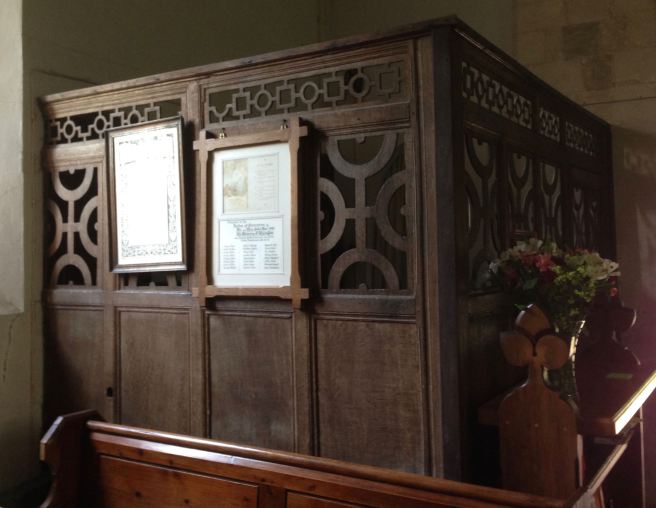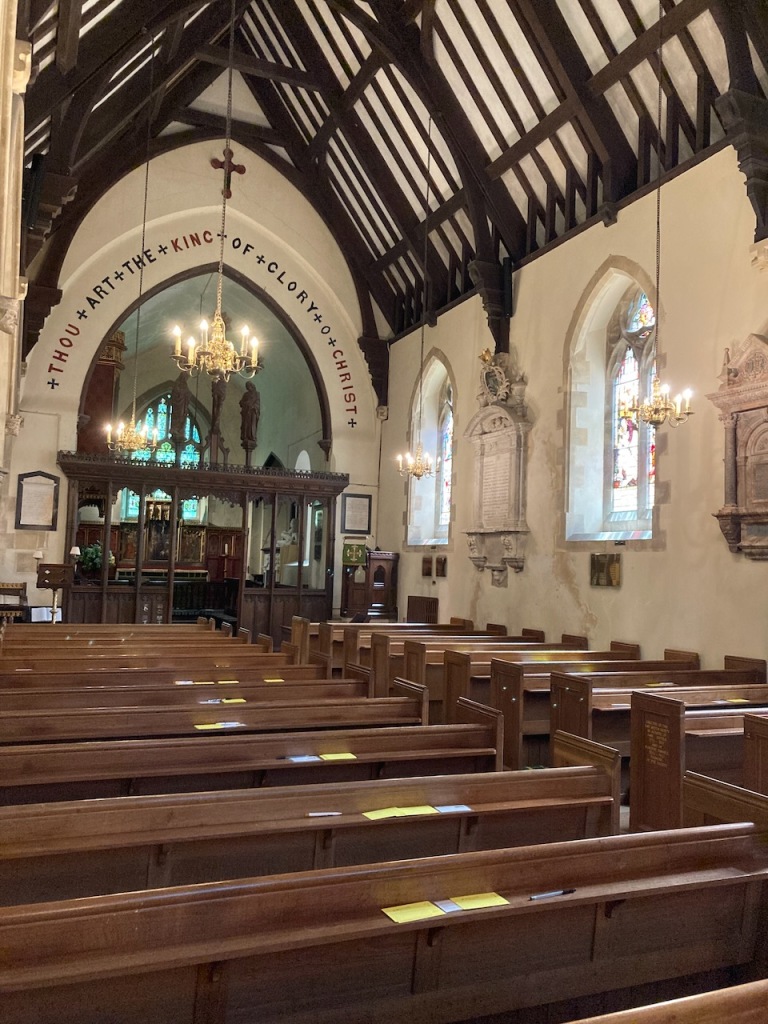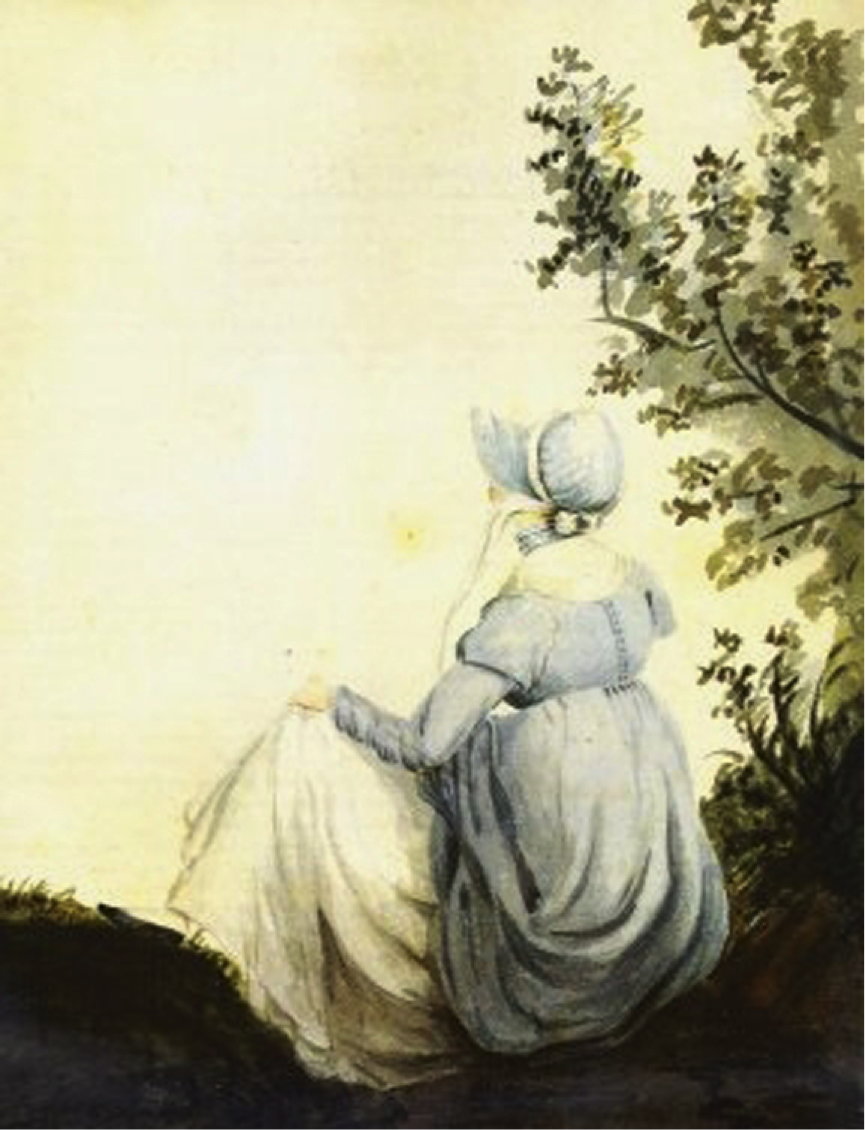“Yes, Miss Elizabeth, you will have the honour of seeing Lady Catherine de Bourgh on the ensuing Sunday at church,”–Mr. Collins, Pride and Prejudice
The church appears in all of Austen’s novels, and played an important part in Jane Austen’s own life. This past summer I had the privilege of visiting a number of churches closely connected to Jane Austen and her family. I will be writing a series of posts to take you along with me to see these fascinating churches and learn about their Austen connections. Here I will just briefly introduce the two main churches she attended, then send you over to Jane Austen’s World for the detailed posts I’ve written on those churches.
Steventon Church

When Jane Austen was born in December of 1775, she lived in the rectory (or parsonage) of the parish church of Steventon. Her father was rector of Steventon and of the neighboring parish of Deane. She was baptized at home the day after her birth in a frosty winter. The following April she was presented at the church (NOT rebaptized, rather “received into the church,” presumably the first time she was taken to church, age just under four months).

The church, built in the Middle Ages, is still externally much as it was, though the Victorians added the green steeple after Austen’s death. Internally, the structure is the same, but the pews and decorations are mostly Victorian. The box pew, which would have sat at the front for the Digweed family during Austen’s time, is now in the back and is used as a vestry, an office for the clergyperson.



Steventon includes memorials to Austen family members and the graves of Jane’s brother James and his family. For many more details and pictures of the Steventon church today, please see my post Jane Austen’s Family Churches: St. Nicholas’, Steventon.
Chawton Church
Oddly, both the Steventon and Chawton parish churches that Jane Austen attended are named after St. Nicholas, patron saint of sailors, children, and others. One reader commented that we could think of him as the patron of unmarried women: this is the St. Nicholas who provided for three undowered women, putting money in their stockings by night to provide dowries so they could marry. From this story, we get our custom of putting out stockings on Christmas Eve, and of course St. Nicholas was the original prototype of “Santa Claus.”
The Chawton church is a short walk for Jane Austen’s House (now a museum), originally Chawton Cottage. She attended that church from 1809 until 1817. Her brother Edward, adopted into the Knight family, owned the Chawton estate, though he usually lived at Godmersham. The church is next to the manor house, Chawton House. It now contains a wonderful library of women’s writing from around Austen’s time.

This church building looks different than it did in Austen’s day. Here is a drawing from a memoir of Austen:

Inside, however, the chancel–the area in the front around the altar, including the Communion rail–is still original. One original pew was saved and is on the back wall. Many of the “monuments” in the church– plaques on the wall, ledgerstones on the ground, and even a statue, are still from the original church.


At the Chawton church you will find the graves of Jane’s mother and sister, and memorials to them, to Jane, and to members of the Knight family (their cousins who adopted her brother Edward). For more details and photos, please visit Jane Austen’s Family Churches: St. Nicholas’s Church, Chawton.
In your own life, is there a church that is important to you? How has that church body, in that particular building and time, impacted your life?
Sources and further resources are listed at:
Jane Austen’s Family Churches: St. Nicholas’s Church, Chawton


